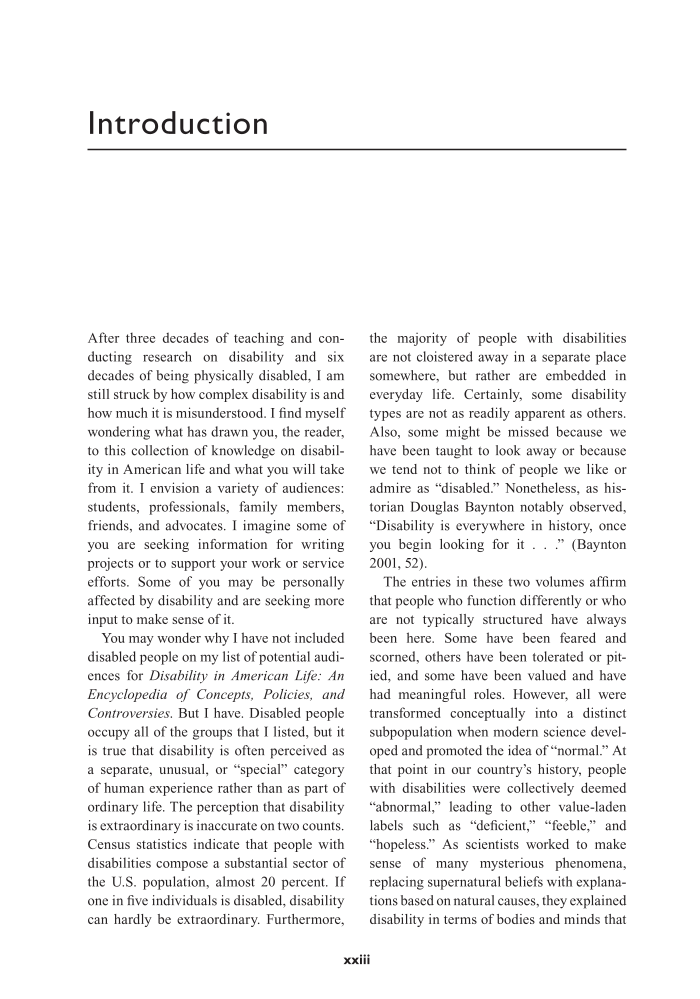xxiii After three decades of teaching and con- ducting research on disability and six decades of being physically disabled, I am still struck by how complex disability is and how much it is misunderstood. I find myself wondering what has drawn you, the reader, to this collection of knowledge on disabil- ity in American life and what you will take from it. I envision a variety of audiences: students, professionals, family members, friends, and advocates. I imagine some of you are seeking information for writing projects or to support your work or service efforts. Some of you may be personally affected by disability and are seeking more input to make sense of it. You may wonder why I have not included disabled people on my list of potential audi- ences for Disability in American Life: An Encyclopedia of Concepts, Policies, and Controversies. But I have. Disabled people occupy all of the groups that I listed, but it is true that disability is often perceived as a separate, unusual, or “special” category of human experience rather than as part of ordinary life. The perception that disability is extraordinary is inaccurate on two counts. Census statistics indicate that people with disabilities compose a substantial sector of the U.S. population, almost 20 percent. If one in five individuals is disabled, disability can hardly be extraordinary. Furthermore, the majority of people with disabilities are not cloistered away in a separate place somewhere, but rather are embedded in everyday life. Certainly, some disability types are not as readily apparent as others. Also, some might be missed because we have been taught to look away or because we tend not to think of people we like or admire as “disabled.” Nonetheless, as his- torian Douglas Baynton notably observed, “Disability is everywhere in history, once you begin looking for it . . .” (Baynton 2001, 52). The entries in these two volumes affirm that people who function differently or who are not typically structured have always been here. Some have been feared and scorned, others have been tolerated or pit- ied, and some have been valued and have had meaningful roles. However, all were transformed conceptually into a distinct subpopulation when modern science devel oped and promoted the idea of “normal.” At that point in our country’s history, people with disabilities were collectively deemed “abnormal,” leading to other value-laden labels such as “deficient,” “feeble,” and “hopeless.” As scientists worked to make sense of many mysterious phenomena, replacing supernatural beliefs with explana- tions based on natural causes, they explained disability in terms of bodies and minds that Introduction
Document Details My Account Print multiple pages
Print
You have printed 0 times in the last 24 hours.
Your print count will reset on at .
You may print 0 more time(s) before then.
You may print a maximum of 0 pages at a time.










































































































































































































































































































































































































































































































































































































































































































































































































































































































































































































